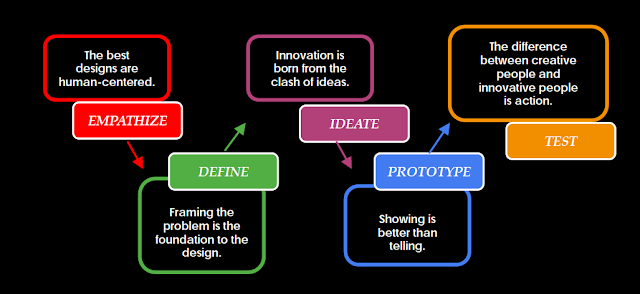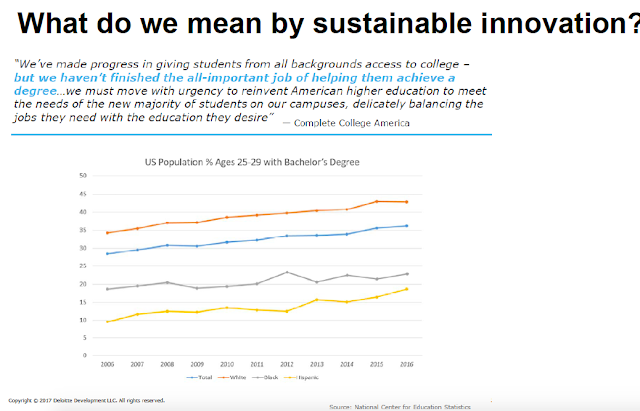I started off the conference with a full-day workshop, the Diana G. Oblinger Innovation Forum: Leading Academic Transformation in Support of Student Success.
Diana G. Oblinger challenged us to think about new jobs that need to be done to ensure student success in the coming years: What if you redefined:
- Timeline for student success -- right now we are looking only at recruitment to degree completion-- expand to career success, to feed forward to next educational experience
- Degree of integration - eg with labor market information, with k-12
- Degree of transparency - to employers to make it more obvious what a credit means
- Outcomes so that students can future-proof themselves for the jobs that have not been invented, jobs created by ourselves-- problem solving, design thinking, critical thinking
- Artificial intelligence and robotics -- how does student success change due to change from data processing to knowledge processing -- new division of labor that may be ahead of us between people and machines (and of course between people who know and people who don't)
 |
| Breakdown of Current Student Success |
The modeling helped us practice and better understand what we can do back at our own institutions when we introduce innovative change.
In a nutshell: With innovation you start on Desirability, and much later deal with Feasibility and Viability. In a perfect world, you get a sweet spot between the three that allows you to fill a genuine need for everyone in your target population (eg, all students) in innovative ways that are feasible and sustainable.
Design Thinking covers the following stages:
 |
| Design Thinking Process |
We had collected student surveys (empathize), then moved to defining our problem in 10 words or less, did a true brainstorm, with a time limit, written collection, quick firing of wild ideas, that led to a prototype sketch that received feedback, ending on formulating metrics to test the prototype, ideally on the population in the first step.
In the afternoon, we discussed strategies and questions to ask of ourselves and others to turn the prototype into a feasible and sustainable innovation on campus. Key here to remember is that graduating more students makes more money, so if the innovation can show, for a small and very specific first target audience, that it is successful, then the small success can be increased.
How bad are the numbers for graduation? Check out this current graph:
 |
| Graduation Rates over the last ten years |
So, how can we present our innovation to have a better chance of getting resources allocated towards it? Delloite Development came up with the following factors:
 |
| 10 Types of Innovation for the Social Sector |
while asking the question about
the market: what do our students need?
the mission: what are we good at that meets the student needs?
the margin: how do we create student value and a sustainable financial model?
Be aware that culture can be stifling to innovation - be aware of higher education orthodoxies that need to be addressed and, carefully, debunked.
No comments:
Post a Comment